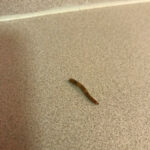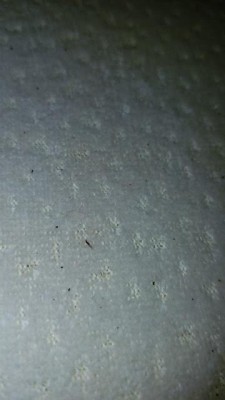Free living roundworms do not pose any health risks. Parasitic forms, however, carry the greatest health risks. Ascaroid nematodes, an important group of parasitic roundworms includes threadworms and the common puppy worm. Another parasitic round worm is the eelworm, which produces root knot of cotton. Others produce earcockle of wheat. The parasitic forms that produce earcockle of wheat belong to the genus Tylenchus. Threadworms belong to the genus Ascaris. The puppy worm is classified as Toxocara canis and eelworms belong to the genus Heterodera.
Other groups of roundworms that pose great medical risks include the various genera known as hookworm. These include the filaria, the cause of elephantiasis; the trichina worm, which causes trichinosis; and the whipworm, which infests the human intestine. The human whipworm is classified as Trichuris trichiura and the trichina worm belongs to the genus Trichinella.
According to MedicineHealth, there are several ways to get rid of roundworms:
“Albendazole (Albenza) is the most common treatment for round worms. Treatment is a single tablet, which kills the worms. There are different strengths for adults and children younger than 2 years. To lessen the chance of reinfection, the infected person will have to take a second dose two weeks after treatment.
Roundworm eggs can survive for a few weeks. Other treatments such as Mebendazole (Vermox) and pyrantel pamoate (Pin-Rid, Pin-X) also work. They are also taken in a single dose and repeated 2 weeks later.”
There are several things that must be done after treatment (and beyond) to prevent reinfection. The treated individual should:
·Avoid biting the fingernails.
·Clean and vacuum play areas. Continue this practice indefinitely.
·Get into the habit of thoroughly washing the hands after using the bathroom, before and after eating, and before preparing food.
·Launder all bedding every 3-7 days for 3 weeks.
·Make sure the child or infected person changes his/her underwear daily.
·Thoroughly wash all bedding, clothing, pajamas, and toys with hot water and soap to destroy any lingering eggs.
·Wash underwear and pajamas daily for 2 weeks.
If you have been treated for round worms and you have carefully followed all of the steps listed above and you still become reinfected, do not get discouraged. It is common to become reinfected several months or so after treatment. Simply call your doctor to get started on another round of treatment.
About Roundworms
Roundworm, also spelled “round worm” or called “nematode,” is the common name for any of a phylum of unsegmented terrestrial, marine or freshwater worms. Roundworms make up the phylum Nematoda and there are approximately 12,000 known species of round worms and thousands of unknown species exist. Many include the Gordian worms or the “Horsehair Worm” as a subclass, but others group them separately.
Roundworms cylindrical bodies consist of an interior gut and a muscular outer wall. The gut and the outerwall are separated by a fluid-filled cavity called a pseudocoel. The outer wall secretes an elastic cuticle. This cuticle molts roughly four times during the round worms lifetime. Round worm species range in size from microscopic to about 4 inches long. While some roundworms are hermaphroditic, like most worm species, oddly most roundworm species have separate sexes and fertilization is internal. Young roundworms develop without metamorphosis.
All About Worms is always free, always reader-supported. Your tips via CashApp, Venmo, or Paypal are appreciated! Receipts will come from ISIPP Publishing.














